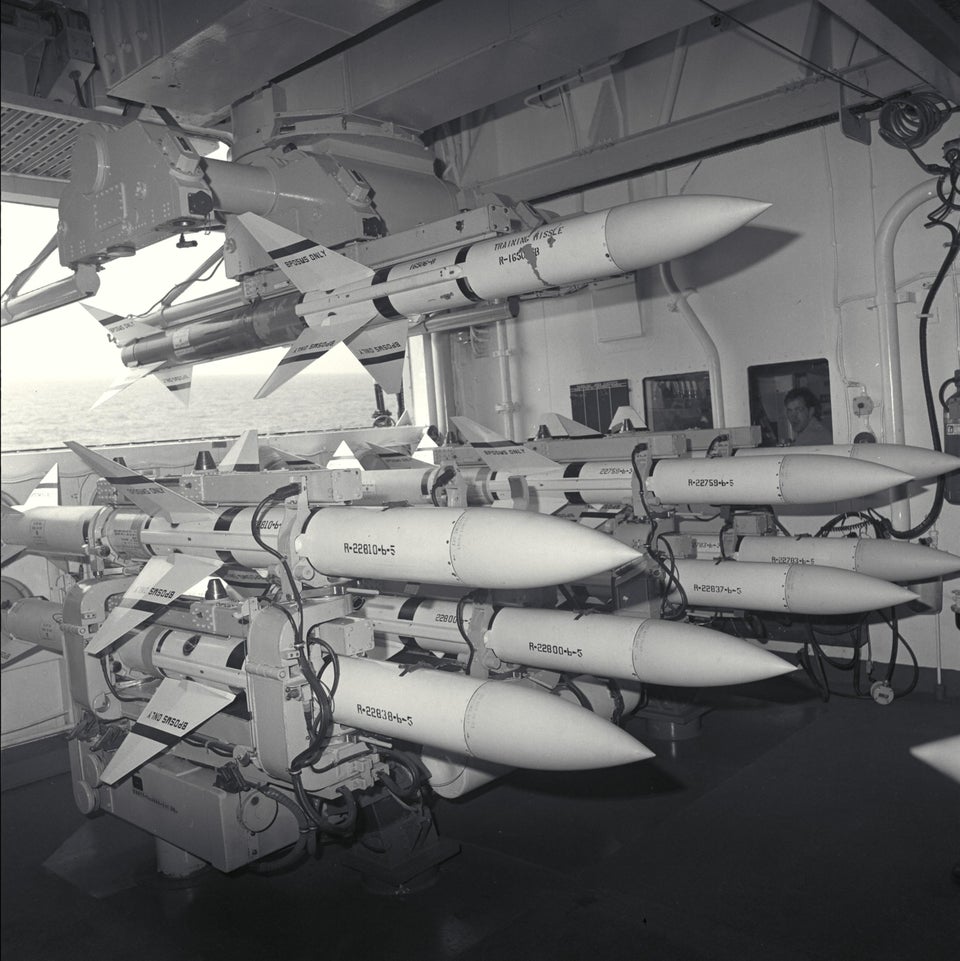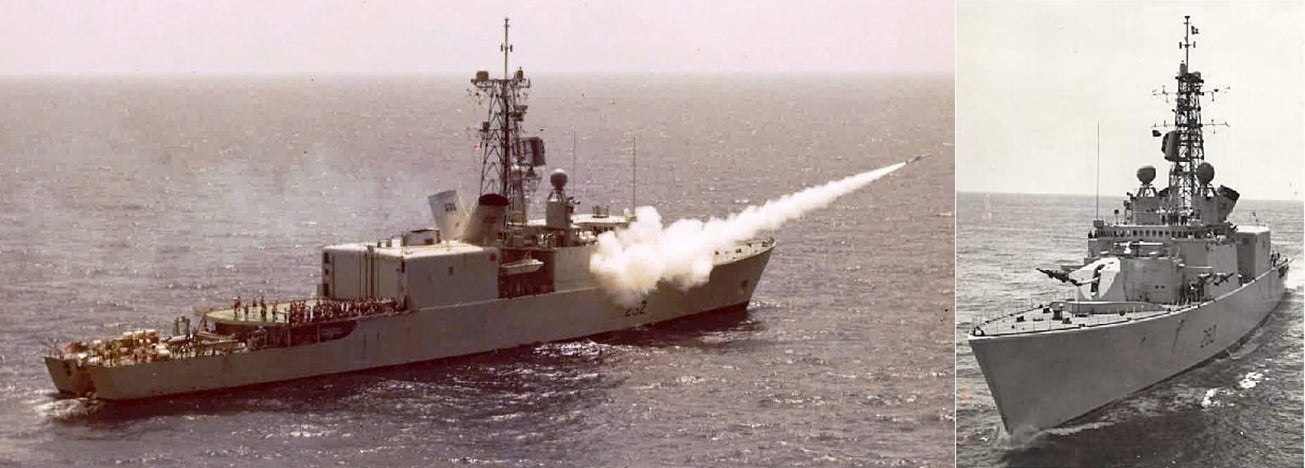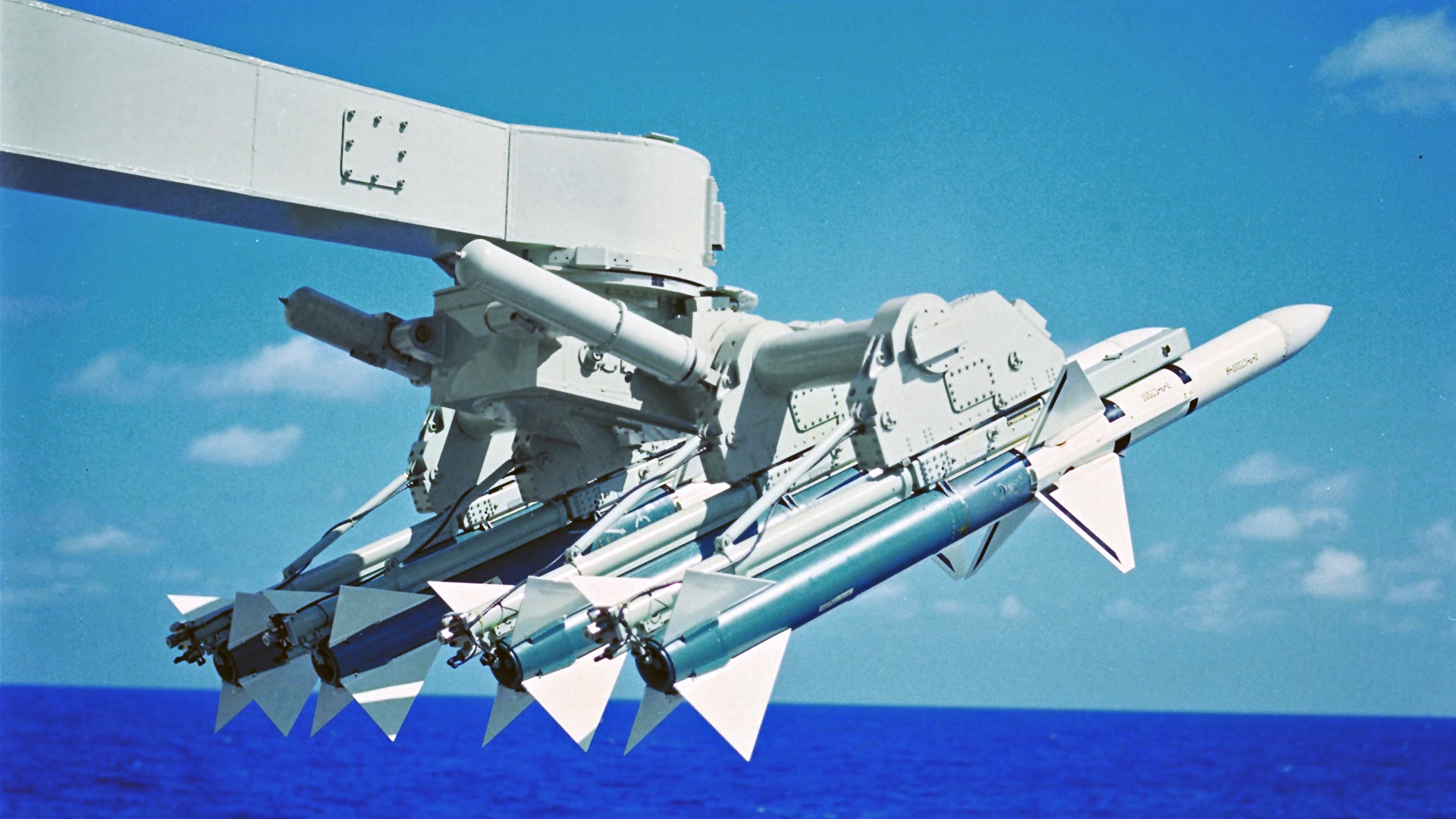Raytheon’s RIM-7 Sea Sparrow surface-to-air missile—which was directly adapted from the AIM-7 Sparrow air-to-air missile—quickly became a huge success, serving with the U.S. Navy and many allied armadas after first entering into service 45 years ago. One NATO ally, in particular, fitted a class of surface combatants with a Sea Sparrow launcher system that was laughably bizarre and supposedly remarkably ineffective. Those ships were Canada’s Iroquois class destroyers, also known as the Tribal class.
The Sea Sparrow system has evolved drastically in terms of capability and form over the decades. You can read all about its earlier and more basic version in this past article of ours. Now in its RIM-162 Evolved Sea Sparrow Missile Block II form, it still enjoys great success. The RIM-7 was designed as a fast-reaction point defense system used to swat down incoming anti-ship missiles and aircraft, some of which could pop-up with little notice as they skim low and fast over the water. Its range was limited to a dozen miles, but in reality, it was usually quite less than that depending on the intercept parameters, conditions, and the missile and fire control system model.
From manually aimed box launchers, to automated ones like the Mk29 still in use today, to vertical launch variants, the Sea Sparrow was adapted for many different launching methods. Yet the strangest had to the one found on Canada’s Iroquois class. About seven years ago, someone who had worked with RIM-7s on U.S. Navy vessels told me about how nuts the Canadian launch system was that he had seen demonstrated in the late 1980s. In fact, he said it was so clumsy and slow reacting, that it largely defeated the main purpose of the missile system, at least in a multitude of circumstances. “Remarkably worthless” was the way he described it. I had long forgotten about this exchange until recently when pictures of this exact system popped up on the always lively Reddit page r/Warshipporn. At first, when I saw the images I was flabbergasted as to how weird the setup was, then the memory of the conversation hit me. This is what my contact was talking about!
Four Iroquois class destroyers were commissioned between 1972 and 1973 and all served until 2005, with the last example being retired two years ago, in 2017. They featured the MKIII Sea Sparrow system fitted inside their forward deckhouse, with doors that opened up on each side and overhead swing-arm launchers carrying four missiles each (eight in total, four on each side) that extended out from their garage-like enclosure that hung out off the side of the ship strangely when at the ready. The whole arrangement looks like something far from conducive to high sea state, not to mention rocket blast from the missiles, or a combat environment, for that matter. 32 missiles were carried in all, with twelve at the ready on each side, but reloading the system as a whole was a slow process.


In addition, it’s said that the Hollandse Signaal Mk22 Weapon Control System wasn’t really up to the task and just deploying the missiles and warming up their guidance systems could take minutes or longer. All of this is far from ideal for what is supposed to have been a fast-reacting point defense system capable of quickly fending off sea-skimming anti-ship missiles that arrive with little warning from over the horizon.
Check out the system in action in the rare video below:

Eventually, the weird Sea Sparrow system was replaced as part of a deep refit of these vessels known as the Tribal Refit and Update Modernisation Program (TRUMP) that would give them a number of enhanced features, including a true anti-air warfare capability via the installation of a Mark 41 Vertical Launch System. It had 29 cells that could accommodate Standard SM-2 missiles. Sensors and combat subsystems were also upgraded at the time. The area where the Sea Sparrows were originally installed was repurposed for an OTO Melara 76 mm Super Rapid gun.
So there you have it, Canada’s Iroquois/Tribal class destroyers had one of the oddest shipboard missile launchers in naval warfare history, although it certainly has some tough competition. It’s also a reminder of just how revolutionary the Mark 41 vertical launch system truly was.
Contact the author: Tyler@thedrive.com
